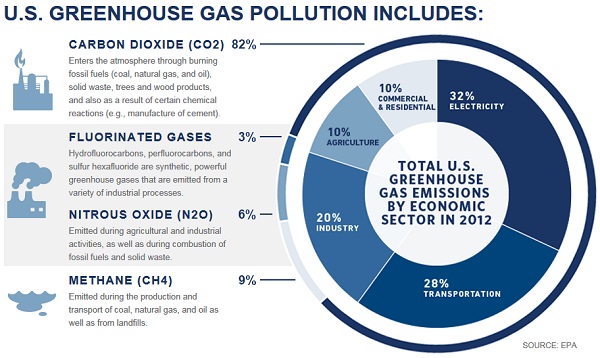The news about the EPA’s plan to limit carbon pollution from existing power plants just got even better: the proposed Clean Power Plan (CPP) can save the power industry and its customers—us—as much as $2 to $4 billion in 2020 and $6 to 9 billion in 2030, while cleaning our air and modernizing the electricity sector.
Those are the results of a recent NRDC analysis. It re-evaluates the costs of EPA’s June 2014 Clean Power Plan proposal using more accurate and up-to-date cost data for clean generating resources such as energy efficiency, wind and solar power. Image: EPA
Image: EPA
Our analysis shows that EPA overstated the amount the utility sector would pay to implement the proposed Clean Power Plan because the agency used a series of outdated assumptions to represent the costs and performance of energy efficiency and wind and solar generation.
Using up-to-date data turns the overall impact of meeting EPA’s proposed standard from a cost into a savings for the utility industry and its customers. Further, the lower costs of energy efficiency and renewable generating technologies open the door to getting substantially more carbon pollution reductions from the nation’s largest emitters.
The EPA originally estimated in June that the CPP would cost between $5.5 to $7.5 billion in 2020. But the proposed plan will actually save utilities between $1.8 and $4.3 billion during that year. When the power sector spends less to meet the Clean Power Plan targets, customers enjoy the benefit of lower electricity bills. Plus, the public health and climate protection benefits (including saved lives, reduced illness, and climate change avoided) will likely outweigh the costs by $9 to $15 billion more than the $27-50 billion the EPA estimated for 2020.
The savings ramp up through the 2020s, reaching $6 billion by 2030. So, rather than costing $7.3 to $8.8 billion in 2030, as EPA estimated in June, the proposed plan will save utilities between $6.4 and 9.4 billion. By 2030, the health and climate benefits can outweigh the EPA-estimated costs by $64 to $99 billion.
Before we go further, let us give some background and an overview of our approach. The EPA assembled its base case, the business-as-usual scenario, based on the Energy Information Administration’s Annual Energy Outlook 2013 (AEO 2013). Since AEO2013’s publication, though, the costs of building wind turbines and solar panels have dropped steadily.
As a result, the cost data for wind and solar power that the EPA used is 46 percent above current averages. Likewise, the EPA very conservatively estimated the cost at which utilities can implement energy efficiency programs at nearly twice the cost of what has been observed in practice. These cost estimates are critical in an analysis like this because they drive the overall compliance costs.
To get a more accurate calculation of these costs, NRDC surveyed studies from a range of sources including the U.S. Department of Energy and Lazard. LBNL just this week released an extensive study covering efficiency programs throughout the United States and found that the average total resource cost of efficiency is 4.4 cents/kWh. Our analysis adopts a relatively conservative range of efficiency costs between 4.7 and 6.4 cents per kilowatt-hour. The costs of adding renewable generation are also significantly lower than what EPA estimated. Since 2010, the costs of installing onshore wind turbines has dropped by 23% while the costs of developing utility scale solar installations have declined by nearly 50%.
NRDC provided updated data reflecting these changes to ICF International, Inc. (ICF). NRDC engaged ICF to run the Integrated Planning Model (IPM®), the same model EPA uses, with the updated data. IPM® determines a least-cost compliance pathway by re-dispatching existing resources and building new resources.
The results?
Meeting the targets proposed under the CPP will save utilities and customers between $1.8 and $4.3 billion in 2020, rather than costing $5.5 to $7.5 billion. The savings would grow in 2030 to between $6.4 and $9.4 billion. That means the EPA overstated the costs of compliance by $9 billion in 2020 and $15 billion in 2030. See the figure below for additional details.
Reference:
H/T: David Doniger’s Blog on NRDC — EPA’s Plan to Curb Carbon Pollution Can Save Billions, NRDC Finds. Co-authored with Starla Yeh, principal analyst of NRDC’s new report.














Comments